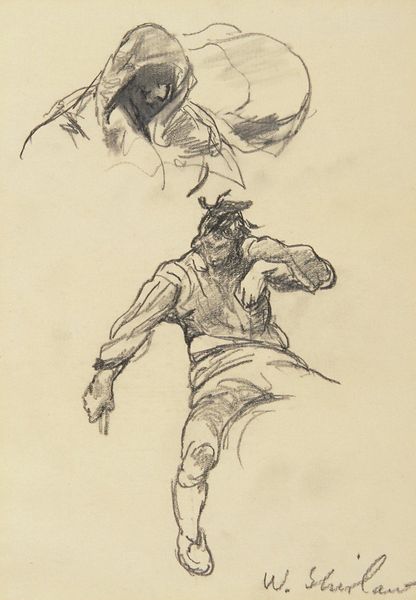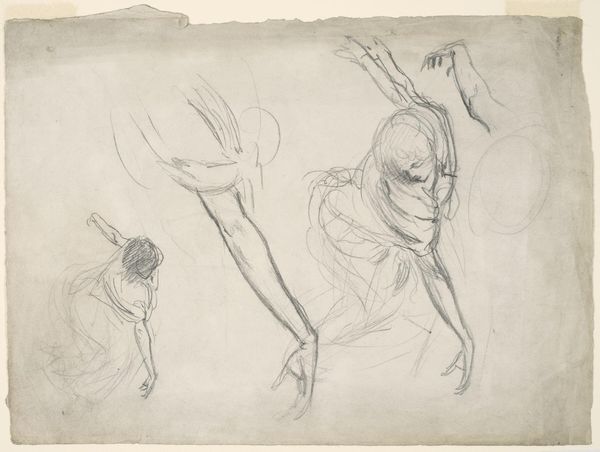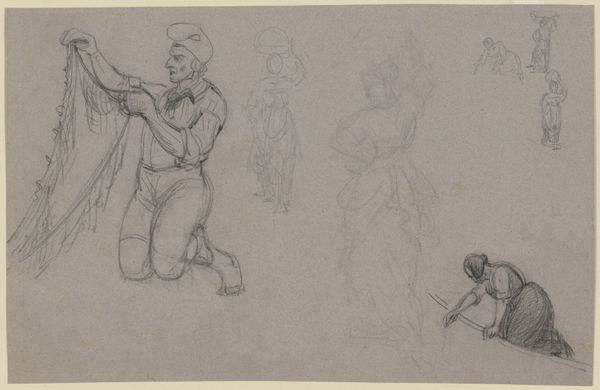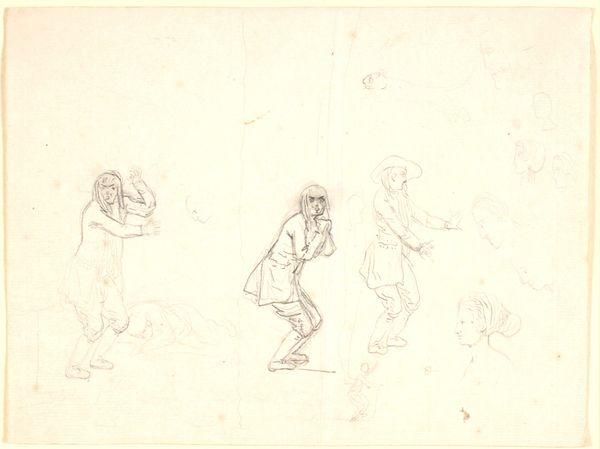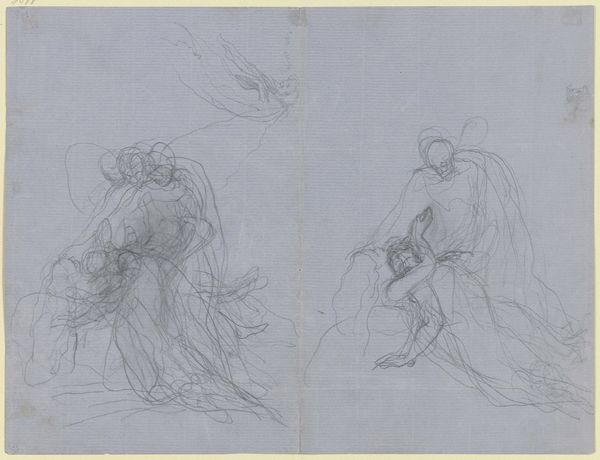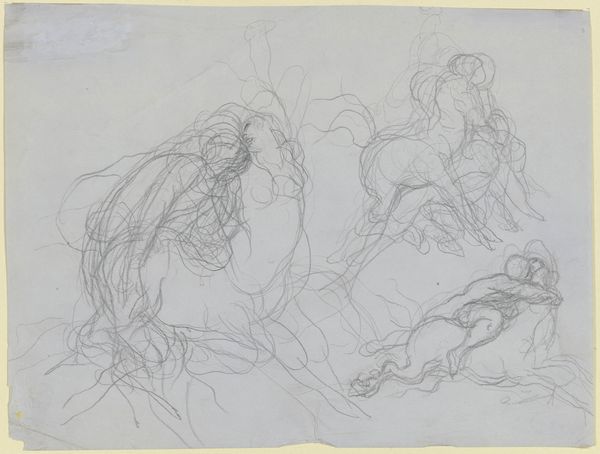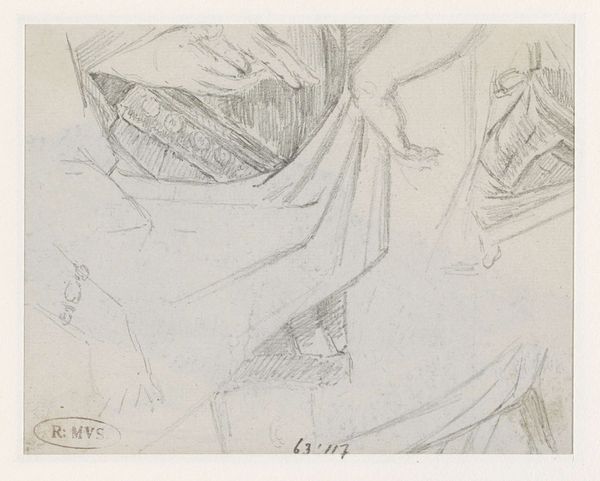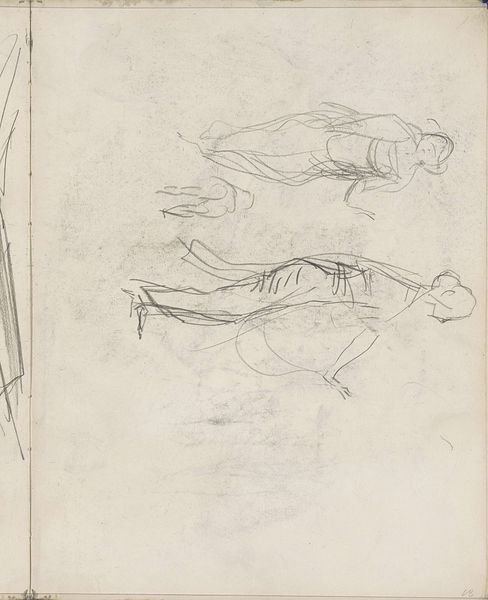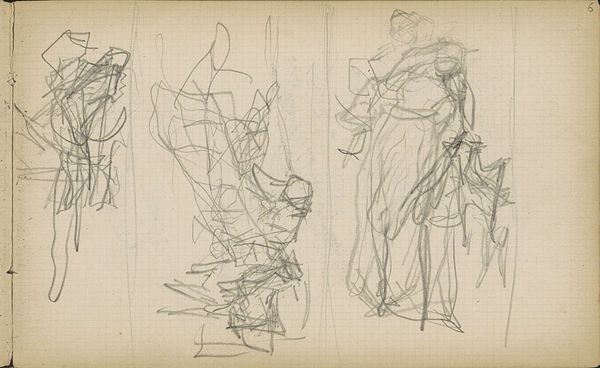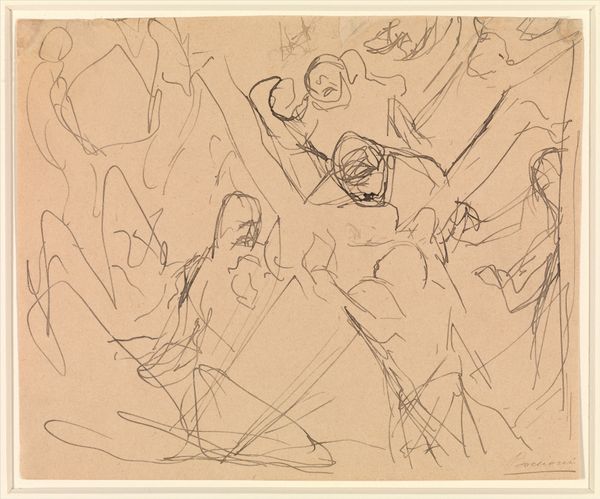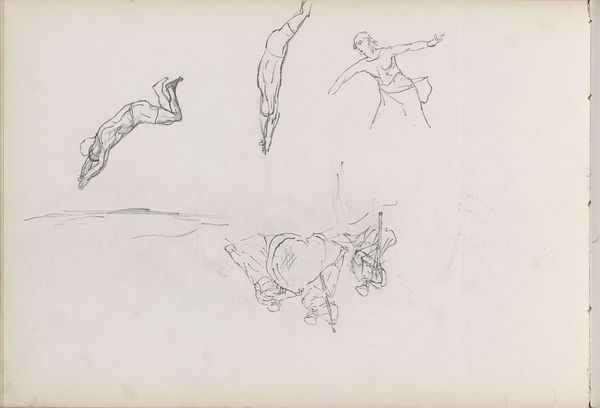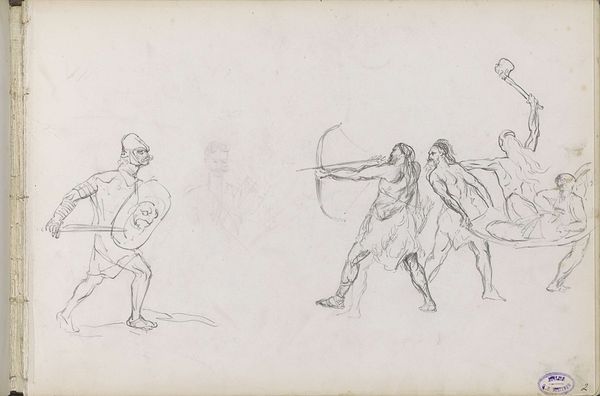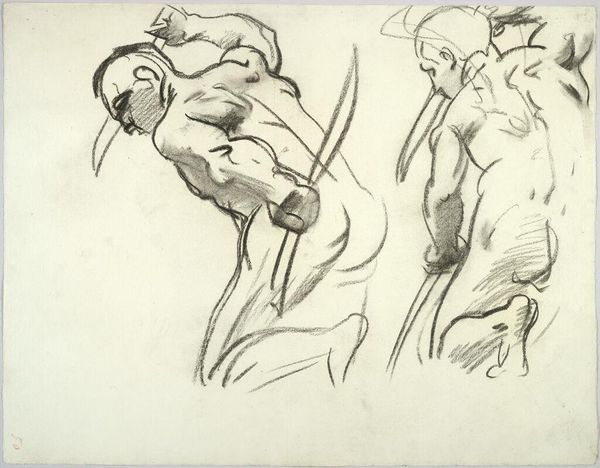
Study of a young man bending forward to kiss a hand, for the painting ‘The Departure of the Prodigal Son’ 1862 - 1863
0:00
0:00
drawing, pencil
#
portrait
#
drawing
#
pencil sketch
#
figuration
#
pencil
#
portrait drawing
#
history-painting
#
academic-art
Copyright: Public Domain: Artvee
Curator: Oh, it’s a collection of gestures and fleeting expressions! Editor: Indeed. What we have here is James Tissot’s "Study of a young man bending forward to kiss a hand, for the painting ‘The Departure of the Prodigal Son’", rendered in pencil between 1862 and 1863. It’s fascinating to see the artist's process laid bare, isn't it? Curator: It's so revealing. He’s captured these tentative movements, multiple angles of the same character. It's like he's trying to pin down a memory, chasing after an elusive feeling. The composition, fragmented as it is, still suggests this palpable longing, or perhaps remorse? Editor: Remorse, yes, certainly in the downward gaze of the top-right study. Note how Tissot uses line and shading to emphasize the dramatic arc of the body—the way the weight shifts onto that outstretched leg, creating a diagonal tension. It’s almost theatrical, this act of supplication. Curator: Exactly! There is this built-up tension but you can sense vulnerability in his sketches, a man reduced to his bare emotions before his father… or some other paternal figure. Do you get that, a sense of vulnerability? Editor: Absolutely, and it's heightened by the use of pencil—a medium that feels immediate, almost confessional. We are given direct access to Tissot's exploration, his hesitations and discoveries as he circles the emotional core of the prodigal son’s return. Note also how that central, draped figure practically obscures itself. It could indicate an aversion or embarrassment from our subject. Curator: Yes, or shame for the situation that they put themselves in? What do you think of the staging? It seems he’s already constructing the stage in his mind. Editor: Stagecraft and semiotics certainly go hand in hand. What's interesting is to see how all those emotions might have been transposed onto a larger canvas to fit his historical and, by now, slightly sentimental interpretation of the Parable. The painting eventually amplified that emotion through the dramatic lighting and rich colors available to oil paints. Curator: A fascinating contrast to how immediate and fleeting all those pencil sketches are. It gives the scene an undeniable power. Editor: Well, in short, Tissot presents not just a preparatory work, but an intimate glimpse into his creative quest, and into human behavior at its lowest and most sympathetic.
Comments
No comments
Be the first to comment and join the conversation on the ultimate creative platform.
